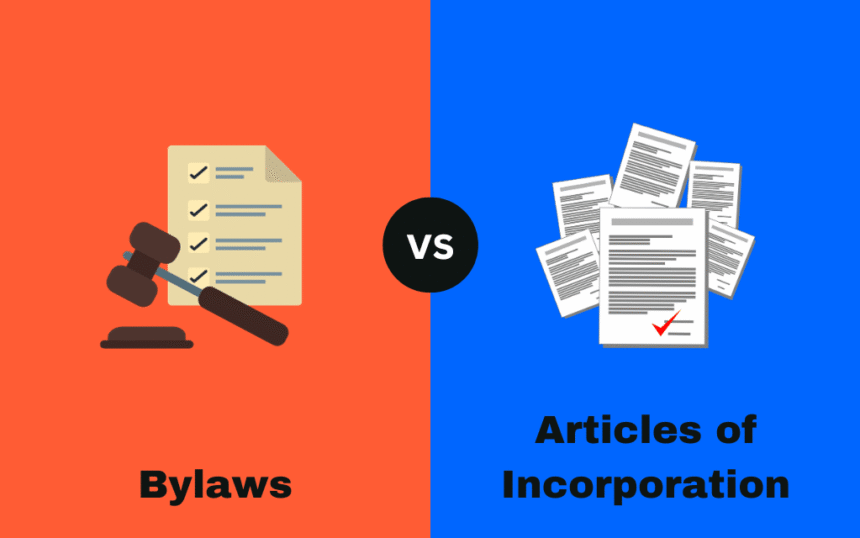bylaws and articles of incorporation
Every organization, whether a startup or a long-standing entity, needs the right foundation to thrive. Two crucial components of that foundation are bylaws and articles of incorporation. These documents may seem like mere formalities, but they hold significant power in shaping how an organization operates. Understanding their roles can provide clarity and direction for your team.
Bylaws outline the internal rules governing your organization, while articles of incorporation establish it as a legal entity. Together, they create a framework that guides decision-making and ensures compliance with regulations. Without them, organizations risk chaos and confusion.
Dive deeper into these essential elements as we explore what bylaws and articles of incorporation entail, their significance for your organization’s success, and why having well-drafted versions is paramount. Let’s unravel this critical aspect of organizational structure together!
Understanding Bylaws and Articles of Incorporation
Bylaws and articles of incorporation are foundational documents for any organization. They serve different yet complementary purposes in defining how an entity operates.
Bylaws establish the internal rules that govern day-to-day activities. This includes decision-making processes, roles of board members, meeting protocols, and other operational guidelines. Think of them as a roadmap for governance.
On the other hand, articles of incorporation provide legal recognition to your organization. This document is filed with state authorities and outlines basic information such as the organization’s name, purpose, registered agent, and structure. It essentially marks your business’s official establishment.
While bylaws focus on internal matters, articles address external relationships with stakeholders and regulatory bodies. Both documents play vital roles in ensuring clarity and accountability within an organization’s framework while safeguarding its interests legally.
The Purpose and Importance of Bylaws
Bylaws serve as the internal operating manual for an organization. They outline how a company or nonprofit functions on a day-to-day basis.
These documents establish rules for governance, decision-making processes, and member roles. This clarity helps prevent misunderstandings among board members and stakeholders.
Without bylaws, organizations can face chaos during meetings or when making critical decisions. Having defined procedures fosters accountability and ensures everyone is on the same page.
Bylaws also provide legal protection. Well-drafted bylaws can defend against disputes by clarifying expectations and responsibilities.
Additionally, they are essential for maintaining transparency within the organization. Stakeholders should easily access these guidelines to understand how decisions are made and who makes them.
In essence, bylaws form the backbone of organizational structure, ensuring stability while navigating challenges that may arise over time.
The Process of Drafting Bylaws
Drafting bylaws is a crucial step in establishing an organization. It starts with gathering key stakeholders to discuss the structure and operational needs of your entity.
Next, outline the purpose of your organization. This will guide decisions on governance and procedures. Identify roles such as board members, officers, and committees.
Then, define how meetings will be conducted. Specify notice requirements, quorum rules, and voting procedures to ensure transparency.
Incorporate conflict resolution mechanisms for any disputes that may arise among members or directors. This adds clarity and fairness to operations.
Review state laws regarding nonprofits or corporations. Your bylaws must comply with these regulations for legal standing. Adjustments may be necessary based on specific organizational needs or feedback from legal experts during the drafting process.
Key Elements to Include in Bylaws
When drafting bylaws, clarity is key. Start with the organization’s name and purpose. This establishes a strong foundation.
Next, outline membership requirements. Specify how members can join or leave, along with any rights they hold.
A well-defined structure for meetings is essential too. Include details on meeting frequency, notice periods, and quorum requirements to ensure smooth operations.
Addressing the roles of officers and directors adds further depth. Clearly describe their duties and powers to avoid ambiguity in decision-making processes.
Don’t forget about amendments! Outline the procedure for revising the bylaws when necessary to adapt to changing circumstances.
Consider including conflict resolution procedures. This helps manage disputes internally without escalating issues externally.
Understanding Articles of Incorporation
Articles of incorporation serve as a foundational document for any corporation. They are filed with the state to legally establish the entity’s existence.
This document outlines essential information about the company. It typically includes its name, principal office address, and details about its registered agent.
Additionally, articles of incorporation specify the purpose of the business and outline share structure. This structure often defines how many shares can be issued and their value.
Filing these articles is crucial for gaining legal recognition. Without this step, you cannot operate as a recognized entity in your jurisdiction.
Understanding this process helps ensure compliance with state laws. Moreover, it sets a framework within which your organization will function effectively from day one.
Differences between Bylaws and Articles of Incorporation
Bylaws and articles of incorporation serve distinct purposes in an organization’s framework. Articles of incorporation establish the existence of a corporation. They provide essential details, such as the company name, purpose, and registered agent.
On the other hand, bylaws offer internal governance rules. They define how a corporation operates on a daily basis. Bylaws cover topics like board meetings, member responsibilities, and decision-making processes.
While articles are filed with state authorities to legally create your organization, bylaws remain internal documents that guide operations. This separation is crucial for clarity in structure and function.
To put it simply, articles focus on legality while bylaws emphasize functionality within the corporate environment. Understanding this difference helps ensure compliance with regulations while fostering effective management practices.
Why Having Properly Drafted Bylaws and Articles is Important for Your Organization
Properly drafted bylaws and articles of incorporation are vital for any organization. They establish the foundational rules that govern operations, ensuring clarity and consistency in decision-making processes.
Without clear bylaws, confusion can arise among members regarding roles, responsibilities, and procedures. This ambiguity may lead to internal disputes that disrupt productivity.
Articles of incorporation serve a different purpose but are equally essential. They officially register your organization with the state, providing legal recognition and protection. This not only enhances credibility but also secures limited liability for owners.
Moreover, well-prepared documents can prevent costly legal issues down the line. They help safeguard against non-compliance with regulatory requirements by outlining structures clearly.
Investing time in drafting these important documents pays off significantly as it creates a solid framework within which your organization can thrive smoothly. An organized structure attracts potential investors or partners who see professionalism at play.
Conclusion
Bylaws and articles of incorporation are fundamental documents for any organization. They serve as the backbone, guiding how a company operates and ensuring compliance with legal requirements. Understanding their nuances can greatly benefit your organization.
Drafting bylaws is not merely an administrative task; it’s about establishing a clear operational framework that promotes efficiency and accountability. Including essential elements ensures clarity in roles, responsibilities, and decision-making processes.
Similarly, articles of incorporation lay the groundwork for your entity’s existence. They provide necessary information to regulatory bodies while defining the organization’s structure at a foundational level.
Recognizing the differences between these two documents helps clarify their individual purposes while highlighting their complementary nature. Both are crucial to safeguarding your organization’s interests and fostering stability.
Having properly drafted bylaws and articles of incorporation is more than just meeting legal obligations—it’s about setting your organization up for long-term success by creating transparent governance structures that encourage growth and adaptability in an ever-evolving business landscape. Taking time to ensure these documents are comprehensive will pay dividends down the road as you navigate challenges and opportunities alike.


